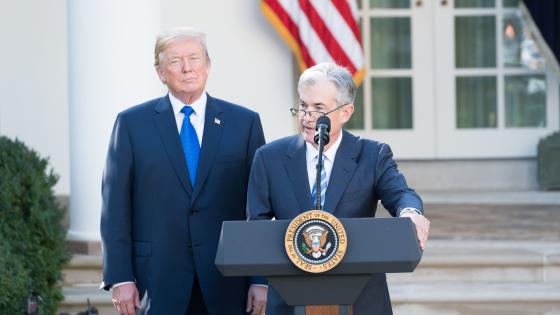Real interest rates are currently at historically low levels in advanced economies, pushing some economists to call for more public spending. Risk-free real interest rates, including those on government bonds, have persistently decreased since the 1980s (Fahri and Gourio 2019). As a result, governments can finance new spending at low fiscal costs – that is, with little, if any, need to raise current or future fiscal surpluses. Blanchard (2019) argued that there is not only no fiscal cost but also a limited crowding out of private investment by public spending in this context. Some policymakers advocate that in this environment, fiscal rules – at least under their current design – are “a debate that belongs to another century”.
However, in the past century, limits to fiscal policies were considered to be important for multiple reasons, foremost among which is central bank independence. It was thought that to guarantee such independence, one should not only grant the central bank a specific statute, instruments, or objectives, but also make sure that the central bank can achieve its objectives given the available instruments. Fiscal policy and, in particular, public debt were considered major threats to this capacity, as they may force the central bank to monetise public debt and ultimately lose control of inflation. Therefore, limits to fiscal policy were considered as essential for central bank independence.
More specifically, the standard view was that fiscal authorities have to make sure that they remain solvent taking as given the paths of price level and monetary policy decisions – in jargon, fiscal policy has to be Ricardian (Woodford 2001). In the euro area, this takes the form of the Stability and Growth Pact, which includes caps on debts and deficits.
What, then, is the effect of low rates on the independence on central banks? Can we abandon fiscal rules to benefit from the current low cost of spending without abandoning central bank independence? Are we condemned to abandoning central bank independence to fight against below target inflation?
In a recent paper (Barthelemy et al. 2019), we extend workhorse models in two directions to answer this question. We first posit that the public sector has a unique ability to supply liquidity vehicles to the economy and thus generate resources above and beyond fiscal surpluses, for example in the form of ‘low rates’. This may relax the interdependence between fiscal and monetary policies that derives from a standard intertemporal budget constraint. Second, rather than assuming that fiscal and monetary authorities commit indefinitely to policy rules, we endow both authorities with objectives and instruments and study the subgame-perfect outcome from their strategic interactions. Put simply, we offer a formal game-theoretic analysis of Wallace’s ‘game of chicken’ between fiscal and monetary authorities.
r<g relaxes the interdependence between fiscal and monetary policies
The standard view following Sargent and Wallace (1981) is that fiscal and monetary policies are strongly interdependent – the ‘unpleasant arithmetic’. A given fiscal policy is compatible with only one current price level given the intertemporal budget constraint of the government. As a result, and following Leeper (1991), either the central bank is not independent and the fiscal authority determines the price level (fiscal dominance), or the fiscal authority commits to a Ricardian policy and the central bank is independent (monetary dominance).
The private demand for public liquidity, which drives interest rates down, may alter this alternative (Bassetto and Cui 2019). More precisely, under the condition that the public sector can roll over fiscally unbacked debt at a sufficiently low rate, the arithmetic is ‘pleasant’ in the sense that it expands the set of fiscal and monetary policies that can be jointly implemented: several current price levels are consistent with a given path of fiscal surpluses. For each of these feasible price levels, there exists an issuance of debt and its rollover compatible with private sector demand for liquidity and government budget constraint.
Importantly, it is sufficient for only one type of public liabilities (e.g. central bank reserves) can be rolled over at such a low cost for the monetary arithmetic to be pleasant even if other liabilities, such as government bonds, carry a higher yield. In this respect, the current environment is not so new.
But r<g may jeopardise central bank independence
However, the extra resources stemming from such low interest rates do not necessarily reinforce central bank independence; instead, they may jeopardise it. In our strategic analysis, we show that the authority – either fiscal or monetary – that is most able to mop up private demand for public liquidity is the one that can impose its views to the other. There will be fiscal consolidation and a stable price level in the future if the monetary authority pre-empts liquidity demand, whereas there will be fiscal expansion and inflation in the case that the fiscal authority does so.
The mechanism is as follows. When it is the monetary authority that first meets demand for public liquidity, it optimally chooses to buy back legacy public debt (through open market operations) to generate additional resources at the date at which the reimbursement of legacy debt and the feasible taxes would otherwise be such that the targeted price level will not be achievable and the central bank would have to let inflation go up. Instead, when a spendthrift fiscal authority meets demand for public liquidity first, it immediately spends the extra resources generated by liquidity demand and issues as much debt as possible in order to make it impossible to honour future public liabilities without inflation.
Our explicit strategic approach offers useful insights into the question that Sargent and Wallace (1981) raise in conclusion of their unpleasant arithmetic: “Which authority moves first, the monetary authority or the fiscal authority? In other words, who imposes discipline on whom?” We contend that the authority that moves first in this sense is the one that pre-empts private demand for liquidity. If the fiscal authority is the primary issuer of the public liabilities sold to the private sector, it de facto controls future price levels. If, on the other hand, the monetary authority is this primary issuer, then fiscal paths cannot dictate the price level.
Policy implications
Despite the current prevalence of low interest rates relative to growth, and even if this prevalence implies that issuing government debt comes at no fiscal cost, fiscal requirements are still needed under ‘pleasant’ monetary arithmetic: the fiscal authority cannot freely use the additional resources implied by low rates without jeopardising central bank independence. This result applies to any type of government consumption, investment, and subsidies that do not relax the government’s intertemporal budget constraint – that is, not associated with an increase in the net present value of future government resources.
A possible fiscal requirement might consist in putting a cap on public debt issuance even if the public sector can issue liabilities at a seemingly very low fiscal cost. Such a cap, if well designed, would limit the capacity of the government to attract an excessive fraction of the private demand for public liquidity, and should eventually ensure central bank independence. The impact, if any, of low rates on such rules should be merely quantitative.
What if inflation is below target, as is currently the case in some advanced economies? A second policy implication comes from reinterpreting the insight that current spending by the fiscal authority makes it more difficult for the central bank to meet its objectives in the future. Suppose that, for whatever reason, the central bank needs to commit to a future price level that is above the level that it will find ex post optimal (as with forward guidance). If it receives a large demand for reserves, then the central bank does not buy back outstanding bonds with the proceeds, as in our paper. Instead, it pays a special dividend to the fiscal authority, which then spends it (‘helicopter money’). This way, the central bank credibly commits to future ex post excessive accommodation and may fight against subdued inflation. To maintain central bank independence, this policy is preferable than a policy of authorising the fiscal authority to finance deficits by issuing more government debt and reneging on fiscal rules. Indeed, under this alternative policy, the government – in so far as it is biased toward spending and does not internalise future inflation, as in our paper (there would be no need for an independent central bank otherwise) – will likely choose to issue a volume of debt leading to inflation above the central bank target in the long run.
Authors’ note: The views expressed here are those of the authors and do not necessarily represent the views of the Banque de France or the Eurosystem.
References
Barthelemy, J, E Mengus, and G Plantin (2019), “Public Liquidity Demand and Central Bank Independence”, CEPR Discussion Paper 14160.
Bassetto, M and W Cui (2018): “The fiscal theory of the price level in a world of low interest rates”, Journal of Economic Dynamics and Control 89: 5–22.
Blanchard, O (2019), “Public Debt and Low Interest Rates”, American Economic Review 109(4): 1197-1229.
Fahri, E and F Gourio (2019), “Accounting for macro-finance trends”, VoxEU.org, 10 March.
Leeper, E (1991), “Equilibria under 'active' and 'passive' monetary and fiscal policies”, Journal of Monetary Economics, 27(1): 129-147.
Sargent, T and N Wallace (1981), “Some Unpleasant Monetarist Arithmetic”, Federal Reserve Bank of Minneapolis Quarterly Review.
Woodford, M (2001), “Fiscal Requirements for Price Stability”, Journal of Money, Credit and Banking 33(3): 669-728.






